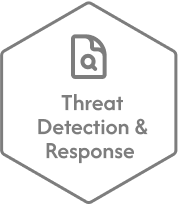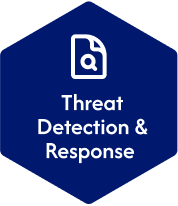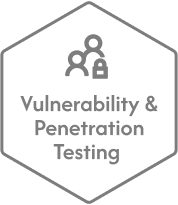- Solutions & Services
- Partners
- About
- Resources
- Careers
- Contact

Vulnerability & Penetration Testing

Simulating attacks and finding weaknesses to strengthen systems, reduce risk, and improve overall security posture.

Threat Detection & Response
Our Exposure Management Service is a comprehensive subscription-based solution designed to help organizations proactively identify, analyze, and mitigate potential attack surface exposures.
By leveraging our extensive expertise in cybersecurity, we provide a detailed understanding of vulnerabilities within your infrastructure and correlate these findings with your unique environmental context.
This enables you to make informed decisions and prioritize remediation efforts effectively.
- Vulnerability Assessment: Conduct comprehensive scans to identify vulnerabilities across your IT infrastructure.
- Contextual Analysis: Correlate identified vulnerabilities with your organizational context to assess risk impact.
- Reporting & Dashboarding: Generate detailed reports and dashboards that visualize exposure levels and remediation status.
- Continuous Monitoring: Implement ongoing monitoring to detect new vulnerabilities and changes in the attack surface.
- Remediation Support: Provide guidance and support for prioritizing and addressing identified vulnerabilities.
Benefits:
Enhanced Security Posture
Informed Decision Making
Compliance Assurance
Reduced Risk Exposure
Cost Efficiency
Red Team Assessments
Our Red Teaming service provides a comprehensive and realistic simulation of multi-vector cyberattacks to assess an organization’s detection and response capabilities.
By employing tactics, techniques, and procedures (TTPs) similar to those used by real-world adversaries, we help organizations identify vulnerabilities across their people, processes, and technology.
This project- based service is designed without prior warning to defenders, ensuring that the assessment reflects the organization’s true security posture under pressure.
- Reconnaissance (OSINT): Identify employee names, email formats, tech stack, open ports, third-party services.
- Initial Access: Methods include phishing, credential stuffing, supply chain attacks, or exploiting public-facing services.
- Establish Foothold: Deploy malware, remote access tools (C2: Command & Control), or web shells.
- Privilege Escalation: Elevate permissions using known exploits or misconfigurations.
- Lateral Movement: Move between hosts via RDP, SMB, or credential reuse.
- Action on Objectives: Exfiltrate sensitive data, simulate ransomware deployment, or achieve persistence.
- Reporting & Debrief: Present findings, TTPs used, and detection gaps. Include MITRE ATT&CK mapping, IOCs, and recommendations.
Penetration Testing
Penetration Testing is a simulated cyberattack on targeted computer systems, networks, or web applications to identify security vulnerabilities that could be exploited by malicious hackers.
- Find weaknesses before real attackers do.
- Assess the effectiveness of existing security measures.
- Meet regulatory compliance requirements (e.g., PCI-DSS, HIPAA).
- Improve security posture by giving organizations insight into real-world attack scenarios.
Actions Performed:
1. External Testing
Targets external-facing systems like websites and firewalls.
2. Internal Testing –
Simulates an attack from within the network (e.g., a rogue employee).
3. Web Application Testing –
Focuses on identifying flaws like SQL injection, XSS, and authentication issues in web apps.
4. Wireless Network Testing –
Looks for weaknesses in wireless protocols and devices.
5. Social Engineering Testing –
Attempts to manipulate employees into revealing sensitive information (e.g., phishing).
6. Physical Penetration Testing –
Tests the security of physical entry points, such as doors and locks.
Phases:
Reconnaissance – Gather information about the target.
Scanning – Identify live hosts, open ports, and vulnerabilities.
Exploitation – Attempt to breach systems using the discovered weaknesses.
Post-Exploitation – Determine the value of the compromised system and maintain access.
Reporting – Document findings, risks, and recommendations.
Cloud Penetration Testing
Cloud Penetration Testing is the practice of simulating real-world attacks on cloud infrastructure, services, and applications to identify security weaknesses before malicious actors can exploit them.
- Authentication & Access: IAM misconfigurations, key/credential exposure
- Network Security: Open ports, weak firewall/NACL settings
- Storage Security: Public S3 buckets, unencrypted blobs
- API Security: Insecure REST APIs, rate limiting issues
- Monitoring & Logging: Lack of CloudTrail logs or improper alerting
- Data Protection: Lack of encryption of data at rest/in transit
- Container Security: Insecure images, Kubernetes misconfigurations
Vulnerability Assessments
This is the process of automatically identifying security weaknesses in computer systems, networks, or applications. It’s a key part of an organization’s cybersecurity strategy, helping to detect known vulnerabilities that could be exploited by attackers.
- Automated Tooling: Specialized software tools scan systems and compare them against a database of known vulnerabilities.
- Targeted Scanning: The scan can be directed at specific assets (e.g., web servers, databases, internal networks).
Detection:
Outdated software or unpatched systems, misconfigurations, open ports and services, default credentials
Reporting:
A report is generated that shows vulnerabilities, their severity level, their impact, and potential solutions to them.
Types of Vulnerability Scanning:
External Scanning:
Simulates an attack from outside your network.
Internal Scanning:
Assesses security from within the network.
Authenticated Scanning:
Uses credentials to access and evaluate systems more deeply.
Unauthenticated Scanning:
Scans without login access—more like what an external attacker would see.
Why:
Risk Management: Helps prioritize which vulnerabilities to fix based on potential impact.
Compliance: Required by standards like PCI-DSS, HIPAA, and ISO 27001.
Proactive Defense: Finds issues before attackers can exploit them.























